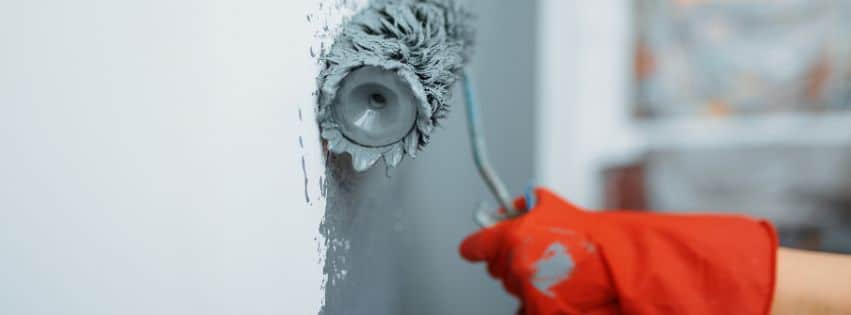
How to Match Paint After a Wall Repair (And Actually Make It Blend)
So you’ve patched the hole, feathered the joint compound, sanded it smooth… and now you’re staring at a slightly-too-shiny or not-quite-the-same-color paint patch.
Blending paint after a wall repair is where a lot of DIY projects fall apart. It’s not just about slapping on the same color—texture, lighting, and paint age all affect the final result. But with the right steps (and some patience), you can make a wall repair disappear completely.
Here’s how we approach blending paint the right way—and how you can avoid the common pitfalls that make repairs stand out instead of fade away.
🎯 Why Blending Paint is So Tricky
Even if you have the exact same paint, the wall repair can still stand out. Here’s why:
-
Sheen mismatch: Flat vs. eggshell vs. satin can drastically change how light hits the wall.
-
Age of paint: Paint fades and changes slightly over time, especially in sunlit areas.
-
Surface texture: Fresh joint compound absorbs paint differently than the surrounding wall unless properly sealed.
-
Lighting: Overhead vs. side lighting (especially in hallways) can make every ridge or shine pop.
That’s why pros don’t just repaint the patch—we blend it into the surrounding area.
🧰 What You’ll Need:
-
Sanding sponge or 220-grit paper
-
Stain-blocking primer (like Kilz or Zinsser)
-
Paintbrush and mini roller (1/4” or 3/8” nap)
-
Matching wall paint (touch-up container or quart)
-
Paint tray and liner
-
Optional: Paint sample cards or leftover paint chips for matching
🔧 Step-by-Step: How We Blend Paint After a Repair
1. Sand and Clean the Area
Once your patch is fully dry, lightly sand to smooth out any ridges or dried compound. Use a damp cloth to wipe away dust—any residue will mess with the paint’s ability to bond.
🧽 The smoother and cleaner the surface, the better your blend.
2. Prime the Patch (Don’t Skip This)
We always use a stain-blocking primer on the repaired area. Joint compound is more porous than paint and will absorb your finish unevenly—causing a dull or discolored spot (a phenomenon called “flashing”).
🎯 Even with a perfect color match, flashing makes the repair visible. Primer stops that.
3. Check Your Paint Match
If you have leftover paint, stir it thoroughly—it may have separated or changed slightly in storage. No leftover paint? Take a sample (cut from a hidden spot or scrape from a previous patch) to a local paint store for a color match.
🎨 Most hardware stores can scan a sample the size of a quarter for an exact match.
4. Use the Right Tools for Blending
We use a mini roller to blend because it mimics the texture of a rolled wall and softens the edges of the painted area. Avoid using just a brush unless your wall was originally brushed.
🖌️ Brush strokes stand out on rolled walls and create sharp edges—rolling gives you soft transitions.
5. Feather the Edges
Roll the paint slightly beyond the edge of the patch and lighten your pressure as you go. This creates a gradual fade into the existing paint, rather than a sharp line. If needed, do a second light coat across a wider area.
🪶 Think “whisper” not “wall smash”—gentle, overlapping coats create seamless blending.
⚠️ Common Mistakes to Avoid
❌ Painting Without Primer
Even high-quality paint won’t cover a patch evenly without a primer base. Skipping this step almost guarantees a visible difference in sheen.
❌ Using the Wrong Sheen
Your wall might look flat—but if the original paint is eggshell or satin, a flat patch will stand out. Check your label or use test swatches to be sure.
❌ Only Painting the Patch
Painting just the patch often leaves a visible edge. Always extend the paint beyond the repair and feather it out.
❌ Not Stirring Old Paint
Old paint settles. Stir it thoroughly to ensure consistent color and sheen—or it may apply darker, lighter, or unevenly.
💡 Final Thoughts
Blending paint after a wall repair is half technique, half patience. The good news? It’s a skill you can learn—and when done right, even a large patch can vanish completely.
If you’re confident with a roller and okay taking your time, this is a great DIY task. But if you’re working in a highly visible area or matching older paint, sometimes it’s worth calling in help with a trained eye (and a paint fan deck).




No Comments
Sorry, the comment form is closed at this time.